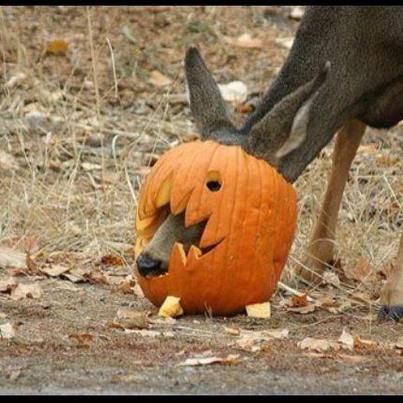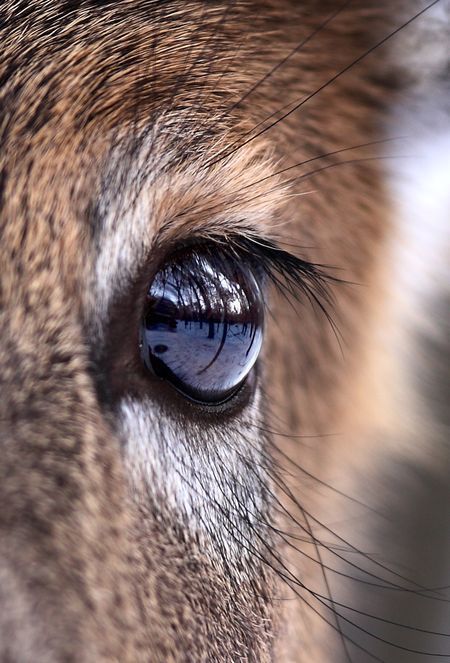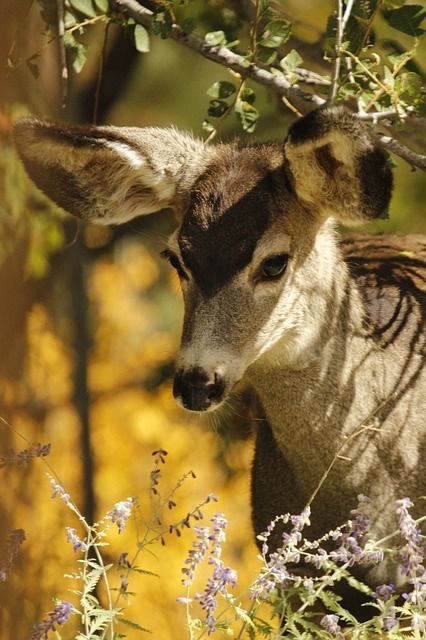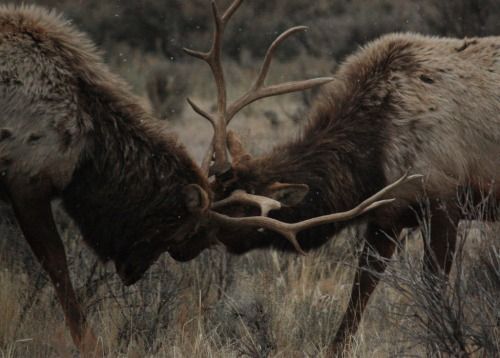Mammals - Blog Posts
I have decided that if I have a child, it’s name, regardless of gender, will be Perry. It’s perfectly gender neutral and meaningful to me as it is the name of one of my role models in life. They are protective, smart and overall caring to the people that love them.
oh- cervidae!!? XDD











but oh... cervidae.. <3











Lesser known small mammals (or mammals whenever i bring up people have no idea what im talking about)

Quoll ..a carnivorous marsupial native to Australia that spends most of the day sleeping in its dens. there have been 111 recorded events of quolls eating human remains (x) (pictured here is a spotted-tail quoll)

Numbat..an insectivorous marsupial from Australia that is diurnal (or is primarily active during the day). unlike other mammals that primarily eat termites, they have a jaw with 50 very small teeth. they live in tree hollows and block the openings with the thick hide of their rump

Hyrax ..a small thickset herbivorous mammal that is more closely related to elephants and sea cows than pikas and marmots. theyre found in africa, and they have rubbery paw pads that help them climb up rocks (this is a rock hyrax)

Solenodon... a venomous, insectivorous little mammal that is easily provoked into a frenzy of squeaking and biting. it uses echolocation to compensate for its poor eyesight, and females have two teats almost located on its backside (above is a cuban solenodon)

Sengi (elephant shrews (or better known as the get a look at the snout species))...is another insectivore that is more closely related to elephants than true shrews. they live in southern Africa and have relatively large brains for their size (a respectable 11 inches) (this is a black and rufous sengi)

Tenrec..omnivorous little mammal that lives in land, sea, underground, and in trees. there are many different subspecies of tenrec that can look like hedgehogs, opossums, rats, and shrews (this is one is a lowland streaked tenrec from madagascar)

Cutie… patootie... agouti? You might know the capybara, but what about its distant cousin the red-rumped agouti (Dasyprocta leporina)? This wide-ranging mammal can be found in forests throughout northern South America including Colombia, Brazil, and Venezuela. Though smaller than its more famous relative, this hefty rodent can weigh up to 13 lbs (5.9 kg). It dines on a diet of fruit, nuts, and seeds. Like a squirrel, the agouti will bury surplus food to save for a later date. But sometimes this critter forgets to come back for its stash, spreading seeds throughout its habitat as a result.
Photo: Robin Gwen Agarwal, CC BY-NC 4.0, iNaturalist
Sometimes I’ll be walking through my everyday life and remember the way your hand felt brushing the small of my waist and that’ll remind me how your voice sounds in the morning and how you grind your teeth at night and how your laugh is my favorite and how your thoughts come out a little at a time like nobody has ever told you that what happens in your head is the most important thing in the whole fucking world to them and I’ll start counting the seconds until I see you again because I want to remind you that I love you wholly and completely.
I literally love being a mammal sooooo much like im soft and warm and get to love other soft warm and nice smelling creature. In the winter I like to get wrapped up so as to stay warm and dry. Its just my #MammalWay. I eat fruits which are sweet as well and I can use germs to make breads cheese and wine. I cant wait to retire to my burrow tonight. And when you touch gently my mammal body it feels good.....omggggg
Fitz was rescued by the SNC a few years ago and is now one of our cutest educational animals.
Because he is not one of the two types of native wild rabbits found in Florida, he cannot be released. But don't worry, he gets plenty of love and care.
Last year our buddy Fitz needed emergency surgery for a broken arm. Thanks to some incredible donors, he is fully recovered and looking forward to a better 2021. Here he is trying to sniff out extra treats.





New sticker album drop! 🦏🐎🦓
I’ve just released a project that’s close to my heart—a sticker album featuring all known species and subspecies of the Perissodactyl order: rhinos, tapirs, horses, zebras. Every animal is illustrated and comes with fascinating facts about their habitat, conservation status, and more.
It’s fun, educational, and made to spark curiosity about our world—because we need more things like that out there.
🛒 Limited copies available now in my webstore (album + stickers included!) 👉 Sticker Album
Thank you for supporting meaningful, handmade projects like this one 💛

Turkmenian Kulan Ever heard of a wild ass that outruns jeeps and survives in places where even camels complain? Meet the Turkmenian kulan, a desert daredevil with a name that sounds like a punchline but belongs to one of Central Asia’s toughest mammals. With serious speed, serious stamina, and zero interest in being tamed, this wild ass is a master of dry-land survival—and yes, "kulan" really does mean wild ass in Turkic.
Infographic on my Instagram
Thanks for padding along with me! 🐾 If this post made your tail wag, give it a like, reblog to spread the paw-someness, and follow for more wild wonders! 🦊✨

🌿 Who is the Central American Tigrina? This tiny wild cat (Leopardus tigrinus centralis) might be a subspecies… or a full species of its own. Some studies even link it closer to ocelots than to its supposed cousins. Mysterious, elusive, and stunningly spotted, it prowls the forests of Central America — quietly vanishing before we’ve even figured out exactly who it is. 🐾✨

Meet the cacomistle, a nocturnal acrobat of the forests! 🌙🌿 This elusive little mammal is a cousin of raccoons, sporting big curious eyes and a striped tail that would make a fashion model jealous. It can climb like a pro and twist its ankles 180 degrees to scamper down trees headfirst—because why take the normal route? 🤸♂️
Process here

A new animal has been unveiled—one of the forest’s best-kept secrets: the Northern Olingo!
A member of the Procyonidae family (which includes the well-known raccoons and coatis), the olingo stands out with its elusive nature. Little is known about its behavior in the wild, making it a true mystery of the treetops.
I’m excited to share that this illustration is sponsored by [sponsor name] and [park name], a fantastic place to spot and photograph this rare creature.
Want to uncover more about the unknown? Join the club to get this week’s exclusive PDF and explore the secrets of the Northern Olingo! Link here

My new art print with all the Panthera genera species and subspecies is available in my store. The artwork has the conservation status of each subspecies, the Latin name, and distribution. All in my store with up to 35% off discount! It is for a limited time. Click here ____________________________
See you next week. If you like the content, leave me some love. Reblogs are also appreciated. This blog is becoming the most complete source of mammals. Little by little. Adios!

A new art print with the lion subspecies. An illustrated Infographic with the classification, conservation status, and distribution. Available here. Through January 16 save up to 35% off in all my store

New animal unveiled: The cape Hippo. Get the full PDF by joining the club. Click here

New species unveiled: The Javan Leopard. To receive the infographic, subscribe to the club. Link here: Unveiling Club

Sulawesi Wart Pig. More here: https://www.instagram.com/species_of_the_world/ Club to get full infographic: https://payhip.com/order?link=ZYD1O&pricing_plan=yZGjrklGNV

New Infographic. The Mountain Tapir. More on my Instagram here: https://www.instagram.com/species_of_the_world/
Or join the club for full access to the infographic here: https://payhip.com/order?link=ZYD1O&pricing_plan=yZGjrklGNV

Infographic here: https://www.instagram.com/species_of_the_world/

A new addition to the club is the newly recognized species, the Australian Snubfin Dolphin. Check out the infographic on my Instagram here:
https://www.instagram.com/species_of_the_world/


New animal in the club. The subspecies of the Number and already extinct the Eastern Rusty Numbat. I must clarify that this subspecies is not fully recognized since further studies need to be done. To join the club click here:
Illustrated mammals and informative sheets every week.


New animal unlocks in my club. Subscribe now for a great introduction to all mammals. You'll receive collectible sheets providing an overview of each animal, including subspecies. I choose Payhip over Patreon because the percentage rate they take is lower. Here is the link:
Thank you!


Loved this one and read about it. Working on the illustration was very relaxing and came out nicely. While working on the head, I was getting slightly confused but in the end, it was all good. I hope you enjoy the sheet as much as I did studying this mysterious and relatively new species. (When I say relatively new is because not so long ago it wasn't classified as a species). Check out the process: Instagram Join the Club

New animal unlock! The Persian Leopard.
Finding information about this subspecies wasn't hard. I have a couple of books that mention it. The problem was to find something curious or different than the usual things. Of course, it covers the essentials and I also wish, it leaves you with some stuff you probably didn't know about this animal.
Process here:

East African Hippopotamus
I appreciate this illustration because it was the second one I did in a hyperrealistic way a few years back. It was essential because it set the tone of the illustrations I wanted to make for this project. I am happy to revisit and work on the information sheet about this charismatic subspecies.
If you want to know about this subspecies and many more, you can join the club. Here

Mountain Gorilla I spent a lot of time searching for the right pose to depict this animal. It's so well-known and loved that I wanted to ensure I captured all its splendor. I believe I did a great job, but it was tough to decide. The drawing process was very challenging, especially since apes' facial characteristics are very human-like and convey the same spirit as ours through their eyes and expressions—a process I enjoyed thoroughly. I hope to one day see them in their natural habitat. Nowadays, they are a tourist attraction since this species cannot be kept in zoos. Interestingly, this situation forces governments to enforce laws protecting them, as they contribute significantly to the country's economy. At the point that they are not classified as critically endangered species but just endangered. Process here: https://www.instagram.com/species_of_the_world/

The Irrawaddy Dolphin. One of the aspects I enjoy most about this project is the opportunity to learn as I work. Before getting involved with dolphins, I had no idea how many different species existed. Now, each time I work with them, I’m struck by the incredible diversity in their shapes and behaviors. This experience also highlights how much there is still to discover about them. Despite feeling a sense of familiarity with dolphins, the extent of the unknown is astonishing, and it amazes me how little we know about many of them. Join the club here: https://payhip.com/b/ZYD1O

